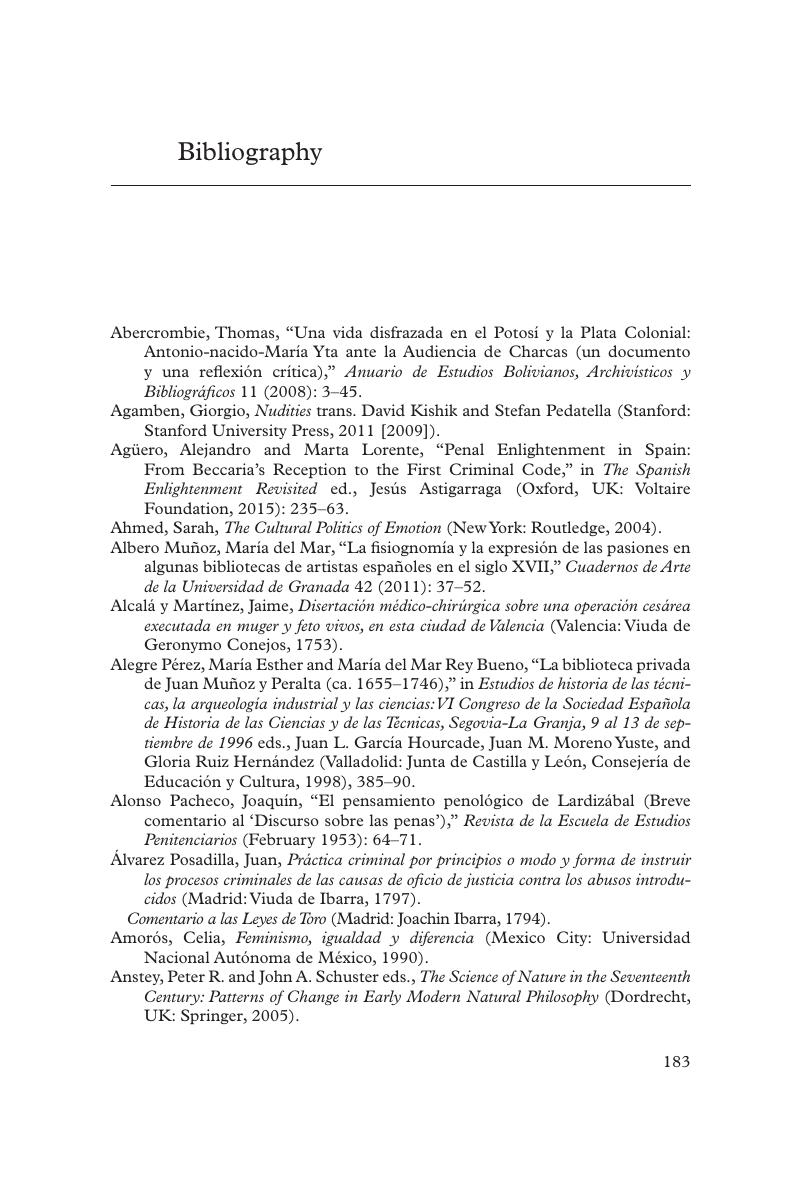Book contents
- Debating Sex and Gender in Eighteenth-Century Spain
- Debating Sex and Gender in Eighteenth-Century Spain
- Copyright page
- Contents
- Illustrations
- Preface
- Acknowledgments
- Introduction
- 1 The Anatomy of Sex
- 2 Medical Theory versus Practice: The Case of Sebastián/María Leirado
- 3 Nature, Nurture, and Early Modern Sexuality
- 4 The Body of Law: Legislating Sex in Eighteenth-Century Spain
- 5 Sex and Gender: Reconsidering the Legacy of the Enlightenment
- Notes
- Bibliography
- Index
- References
Bibliography
Published online by Cambridge University Press: 22 September 2017
- Debating Sex and Gender in Eighteenth-Century Spain
- Debating Sex and Gender in Eighteenth-Century Spain
- Copyright page
- Contents
- Illustrations
- Preface
- Acknowledgments
- Introduction
- 1 The Anatomy of Sex
- 2 Medical Theory versus Practice: The Case of Sebastián/María Leirado
- 3 Nature, Nurture, and Early Modern Sexuality
- 4 The Body of Law: Legislating Sex in Eighteenth-Century Spain
- 5 Sex and Gender: Reconsidering the Legacy of the Enlightenment
- Notes
- Bibliography
- Index
- References
Summary

- Type
- Chapter
- Information
- Debating Sex and Gender in Eighteenth-Century Spain , pp. 153 - 182Publisher: Cambridge University PressPrint publication year: 2017



